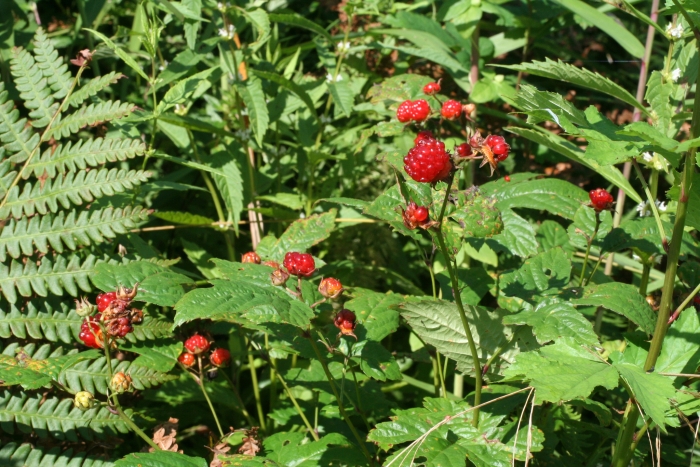Korean Raspberry
(Rubus crataegifolius)
Korean Raspberry (Rubus crataegifolius)
/
/

Oleg Kosterin
CC BY 4.0
Image By:
Oleg Kosterin
Recorded By:
Copyright:
CC BY 4.0
Copyright Notice:
Photo by: Oleg Kosterin | License Type: CC BY 4.0 | License URL: http://creativecommons.org/licenses/by/4.0/ | Rights Holder: Oleg Kosterin | Publisher: iNaturalist | Date Created: 2020-08-07T11:25:02-07:00 |




































Estimated Native Range
Summary
Rubus crataegifolius, commonly known as Korean Raspberry, is a deciduous shrub native to temperate regions of East Asia, including Korea, Japan, and China. It thrives in forest margins, clearings, and along streams, where it forms dense thickets. This shrub typically grows to 1–2 meters in height, occasionally reaching up to 3 meters. The leaves are notable for their size, 5–12 cm in length and 5–8 cm broad, with a palmate structure featuring three to five lobes and a serrated edge. The Korean Raspberry blooms with white flowers, each about 1–1.5 cm in diameter, consisting of five petals. Flowering occurs in late spring to early summer, and the flowers are modestly showy. The fruit is an aggregate of numerous red drupelets, each about 1 cm in diameter, resembling a raspberry, and ripens in late summer.
The plant is valued for its edible fruit, which is used in traditional Korean cuisine, and for its potential medicinal properties. It is also appreciated for its ornamental qualities, such as the textured foliage and the fruit it bears, which can attract wildlife to the garden. Korean Raspberry is suitable for naturalistic plantings and can be used for erosion control on slopes. It prefers full sun but can tolerate part shade and requires medium amounts of water. It is adaptable to a range of soil types, provided they have good drainage. While generally easy to maintain, it can be susceptible to pests like aphids and fungal diseases such as rust. Gardeners should be aware that it can spread aggressively via root suckers, potentially becoming invasive in some areas.CC BY-SA 4.0
The plant is valued for its edible fruit, which is used in traditional Korean cuisine, and for its potential medicinal properties. It is also appreciated for its ornamental qualities, such as the textured foliage and the fruit it bears, which can attract wildlife to the garden. Korean Raspberry is suitable for naturalistic plantings and can be used for erosion control on slopes. It prefers full sun but can tolerate part shade and requires medium amounts of water. It is adaptable to a range of soil types, provided they have good drainage. While generally easy to maintain, it can be susceptible to pests like aphids and fungal diseases such as rust. Gardeners should be aware that it can spread aggressively via root suckers, potentially becoming invasive in some areas.CC BY-SA 4.0
Plant Description
- Plant Type: Shrub
- Height: 6-8 feet
- Width: 3-5 feet
- Growth Rate: Moderate
- Flower Color: White
- Flowering Season: Summer
- Leaf Retention: Deciduous
Growth Requirements
- Sun: Full Sun, Part Shade
- Water: Medium
- Drainage: Slow, Medium, Fast
Common Uses
Bee Garden, Bird Garden, Butterfly Garden, Edible*Disclaimer: Easyscape's listed plant edibility is for informational use. Always verify the safety and proper identification of any plant before consumption., Hummingbird Garden, Low Maintenance
Natural Habitat
Temperate forest margins, clearings, and along streams in East Asia
Other Names
Common Names: 산딸기, 산딸기나무, Niu Die Du
Scientific Names: , Rubus crataegifolius, Rubus takesimensis, Rubus wrightii, Rubus morifolius, Rubus crataegifolius f. makinoensis, Rubus crataegifolius var. morifolius, Rubus ampelophyllus, Rubus crataegifolius f. itoensis, Rubus makinoensis
GBIF Accepted Name: Rubus crataegifolius Bunge